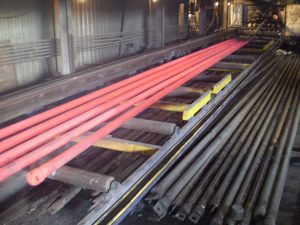
Co-existence of climate mitigation and oil sands development will be the new norm for many decades
Critics of the new Alberta Oil Sands Advisory Group are missing a key point: mixing environmentalists with industry representatives perfectly reflects the NDP approach to climate and energy strategy.

Rachel Notley’s government, like the Justin Trudeau Liberals in Ottawa, is working from a worldview that is increasingly common in global governments, and even the oil and gas business: That the economy has begun a transition from fossil fuels to clean energy technology that will take 75 to 100 years, during which hydrocarbons and renewable energy will co-exist – and compete – for decades.
I recently interviewed Jim Carr, Canadian natural resources minister. He told me the energy transition model drives Canadian government policy and those of a number of key Canadian provinces, including Alberta. And only a few weeks ago the Prime Minister was quoted at a Vancouver clean tech conference saying there is no contradiction between wind turbines and pipelines, both are needed.
We shouldn’t be surprised, then, that this dual approach is embedded in just about every policy and program introduced by the Alberta government, including the Oil Sands Advisory Group. Notley deliberately chose “members from industry, environmental organizations, and Indigenous and non-Indigenous communities to advise government on the oil-sands aspects of its Climate Leadership Plan and ensure that its initiatives are effective and widely supported.”

According to the government, the group will advise policy makers on how best to implement the recently announced annual greenhouse gas emissions limit of 100 megatonnes for oil sands production (with allowances for new upgrading and co-generation), reduce GHG emissions intensity in oil sands production, and address local and regional environmental issues.
The Oil Sands Advisory Group will be led by three co-chairs: Dave Collyer, former president of Canadian Association of Petroleum Producers; Tzeporah Berman, adjunct professor of environmental studies at York University; and Melody Lepine, Mikisew Cree First Nation.
Berman’s appointment has drawn fierce political fire from the Wildrose Party and industry critics, who recall her climate activism and noisy criticism of the oil sands. “Appointing a co-chair to the OSAG who is vocally opposed and has made a career off of opposing our oil sands industry is deeply disappointing,” Wildrose Leader Brian Jean said in a statement.
Jean’s comment’s led Berman to post a long explanation of her oil sands position on Facebook. In it, she reflected on the evolution of her understanding of environmental activism, one that is in line with the energy transition model I described above.
“Though I have been a vocal critic of “business as usual” in the oil sands, I recognize that change doesn’t happen over night. It is a tremendous step forward that the Alberta government has decided to extend our earlier industry-environment work and enlist the help of more industry participants and the wisdom of non-Indigenous and Indigenous community leaders,” Berman wrote.

“I am committed to working in good faith with the rest of the advisory group to develop advice that ensures a strong economy and a leadership position for Alberta on environmental issues.”
Compare Berman’s comment with that of Collyer, an unabashed supporter of the oil sands: ““This is a pivotal moment for Alberta and Canada as we chart a pathway to address cumulative impacts in the oilsands, implement new climate plans and develop a strong low carbon economy.” They are cut from the same cloth.
What Alberta is witnessing is the emergence of a new political consensus around energy, climate, and the environment that recognizes the compromises inherent to managing an energy transition. No government can be 100 per cent pro-climate or pro-oil and gas to the exclusion of the other.
We’re seeing the same political consensus evolve in other jurisdictions, including the United States, where polarized and fractious debates are the norm.
Albertans who insist on viewing the Oil Sands Advisory Group through the filter of an eco-activist or fossil fuel booster will miss entirely the dynamics of the new consensus. Which is a pity, because the new approach will be far more effective than the old at achieving the objective of both groups.


5 Trackbacks / Pingbacks